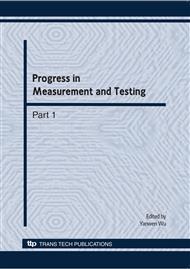[1]
E. Sinani, K. Meyer. Spillovers of technology transfer from FDI: the case of Estonia. Journal of Comparative Economics, 32 (2004), 445-466.
DOI: 10.1016/j.jce.2004.03.002
Google Scholar
[2]
China Daily. Overseas investment on the up. 1st February (2005).
Google Scholar
[3]
J. Furman, M. Porter, S. Stern. The determinants of national innovative capacity. Research Policy, 31(2002), 899-933.
DOI: 10.1016/s0048-7333(01)00152-4
Google Scholar
[4]
H. Gorg, D. Greenaway. Do domestic firms really benefit from foreign direct investment? World Bank Research Observer, 19 (2004), 171-197.
DOI: 10.1093/wbro/lkh019
Google Scholar
[5]
A. Marin, M. Bell. Technology Spillovers from foreign direct investment: the active role of MNC subsidiaries in Argentina in the 1990s. Journal of Development Studies, 4 (2004), 678-697.
DOI: 10.1080/00220380600682298
Google Scholar
[6]
D. T. Coe, E. Helpman. International R&D spillovers. European Economic Review, 39 (1995), 859-887.
DOI: 10.1016/0014-2921(94)00100-e
Google Scholar
[7]
M. Connolly. North-South technological diffusion: a new case for dynamic gains from trade. Duke University, Department of Economics, Working Papers No. 99-08 (2000).
Google Scholar
[8]
W. Keller. Are international R&D spillovers trade-related? Analysing spillovers among randomly matched trade partners. European Economic Review, 42 (1998), 1469-1481.
DOI: 10.3386/w6065
Google Scholar
[9]
C. Kao, M. H. Cheng, B. Chen. International R&D spillovers: an application of estimation and inference in panel cointegration. Oxford Bulletin of Economics and Statistics, 61 (1999), 691-709.
DOI: 10.1111/1468-0084.61.s1.16
Google Scholar
[10]
L. Westphal. Technology strategy for economic development in a fast changing global economy. Economics of Innovation and New Technology, 11 (2002), 275-320.
DOI: 10.1080/10438590200000002
Google Scholar
[11]
B. Durham. Absorptive capacity and the effects of foreign direct investment and equity foreign portfolio investment on economic growth. European Economic Review, 48 (2004), 285-306.
DOI: 10.1016/s0014-2921(02)00264-7
Google Scholar
[12]
D. Castellani, A. Zanfei. Technology gaps, absorptive capacity and the impact of inwrad investments on the productivity of European firms. Economics of Innovation and New Technology, 12 (2003), 555-576.
DOI: 10.1080/714933761
Google Scholar
[13]
C. Mason, W. D. Perreault Collinearity, power, and interpretation of multiple regression analysis. Journal of Marketing Research, 28 (1991), 268-280.
DOI: 10.1177/002224379102800302
Google Scholar
[14]
W. M. Cohen. R. C. Levin, D. C. Mowery. Firm size and R&D intensity: a re-examination. Journal of Economic Studies, 35 (1987), 543-563.
Google Scholar
[15]
W. Keller. International technology diffusion. Journal of Economic Literature, 42 (2004), 752-782.
Google Scholar
[16]
A. Fernandes, A. Isgut. Learning-by-exporting, and productivity: evidence from Colombia. World Bank Policy Research, Working Paper No. 3544 (2005).
DOI: 10.1596/1813-9450-3544
Google Scholar


